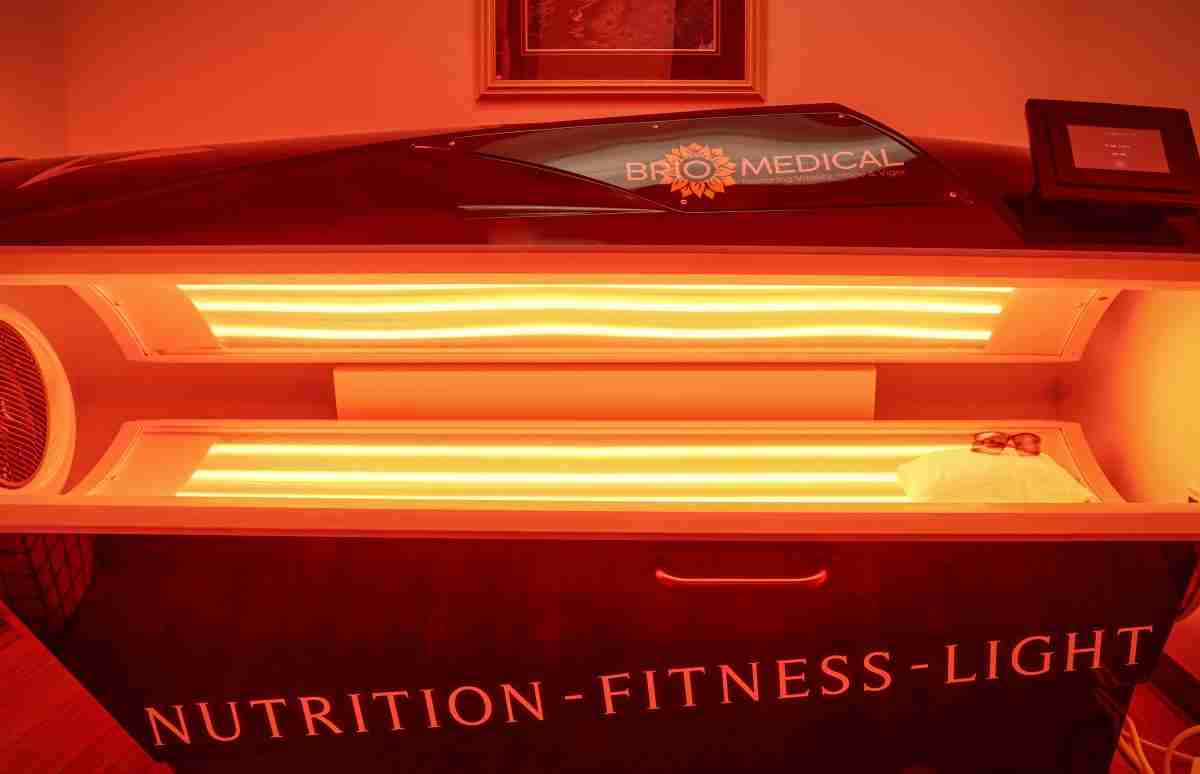Red Light Therapy
bri·o - the quality of being active, alive, spirited, and vigorous
Red Light Therapy Treatment in Scottsdale, Arizona
Brio-Medical Is An All-Natural Integrated Wellness Center That Specializes In Lyme And Cancer Treatments For Clients such as Red Light Therapy Treatment.
Prism Light Pod’s Is A Full Body Cold Laser Therapy Machine That Emits Red Light Energy That Is Absorbed By Our Body’s Cells. The Light Absorbed By Our Cells Is Converted To Bio-Energy For Quick Healing.
This Therapy Increases The Body’s Natural Healing Process, Repairs Damaged Or Injured Body Cells, Reduces Pain, Edema, Inflammation, And Minimizes Healing Time. The Red Laser Light Pod Can Treat A Variety Of Conditions. It’s Non-Toxic And Non-Invasive.

How Does Red Light Therapy Work?
What is Photobiomodulation (PBM Therapy)?
Photobiomodulation delivers infrared light to the body to encourage cell growth. This ‘laser bed treatment’ improves tissue repair and reduces oxidative stress, pain, and inflammation. Light is emitted at a specific infrared frequency which activates beneficial biological processes. The frequency carries photons into the body which transmit their energy, recharging cells, and releasing cells’ transcription factors. Photobiomodulation also improves the efficacy of IV therapy by reducing oxidative stress on the body’s cells.
Studies have shown that photobiomodulation on the tibia and sternum improves the circulation of stem cells by five hundred percent.
Low-Level Laser Therapy
You may have heard of photobiomodulation (PBM) named Cold Laser Therapy or Low-Level Laser Therapy (LLLT). It is a local light therapy using lasers or LEDs to improve tissue repair, reduce pain and inflammation wherever the beam is applied.
Applied by a doctor, therapist, or technician, treatments take about ten minutes and should be scheduled two or more times a week. PBM has been used for many years on sports injuries, arthritic joints, neuropathic pain syndromes, back and neck pain.
Over three hundred randomized clinical trials have been published on PBM, half of which are on pain. These studies indicated a significant reduction of inflammation equal to or better than NSAIDs within two hours, analgesic effects that last for forty-eight hours, and healing time of chronic tendinopathies reduced by 70 percent.
How Photobiomodulation (PBM) Therapy Works
Light can stimulate or inhibit cellular functions according to its intensity and the time applied. Photobiomodulation delivers infrared light at a specific wavelength to the body to encourage cell growth and activates beneficial biological processes. The frequency carries photons into the body which transmit their energy, recharging cells, and releasing cells’ transcription factors.
This ‘laser treatment’ improves tissue repair, reduces oxidative stress, pain, and inflammation. Photobiomodulation also improves the efficacy of IV therapy by reducing oxidative stress on the body’s cells.
“The key to a successful PBM or Cold Laser Therapy is when the right wavelength with the right intensity is used at the correct anatomical location for the right amount of time.”


